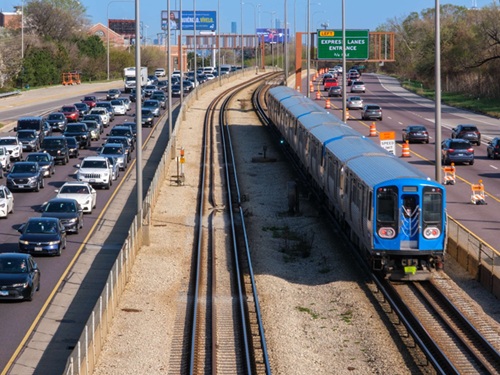Five state and local government entities – including three state departments of transportation – recently signed agreements with NASA to study how cargo-carrying drones and passenger-carrying air taxis can best be included in local and regional civic transportation plans.
[Above image by Lillian Gipson and Kyle Jenkins for NASA]
The five government entities that have signed agreements with NASA are the Massachusetts Department of Transportation; Minnesota Department of Transportation; the North Central Texas Council of Governments Department of Transportation; the Ohio Unmanned Aircraft Systems Center within the Ohio Department of Transportation; and the City of Orlando, Florida.

Those five entities and NASA plan to engage in “cooperative activities” through summer of 2022, which includes a series of at least four workshops as part of NASA’s Advanced Air Mobility or AAM mission. That mission seeks to help create safe, sustainable, accessible, and affordable air travel to support emerging aviation markets at the local and regional level using revolutionary new aircraft only now becoming reality.
Nancy Mendonca, NASA’s deputy AAM mission integration manager, explained in a statement that those workshops expect to address “a wide range of pertinent topics” related to AAM. That includes everything from identifying a common set of terms to use in discussions and planning documents, to evaluating potential criteria for locating future “vertiports” for vertical takeoff and landing aircraft.
“What’s the best way for a local government to implement an AAM system that is equitable, sustainable, and integrated with its other transportation systems? Answering that is a big part of what this is all about,” she said.
Another major goal of these agreements is to develop a “best practice” document that other states and municipalities might follow in developing their own plans for integrating AAM into their transportation systems.
“We also hope these workshops and any subsequent best practices that are identified will address successful methods for engaging the public in the planning process and generating support for AAM in their communities,” Mendonca added.
 Nation
Nation


